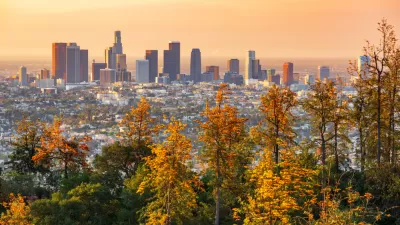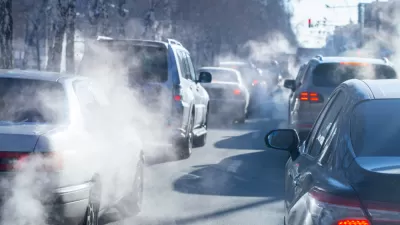As the popularity of delivery services grows, regulation and tech can address pollution challenges and limit congestion.

An article by Ysabelle Kempe in Smart Cities Dive highlights the efforts of eight cities and one county to reduce emissions from delivery services as part of a zero-emissions delivery challenge launched by Climate Mayors, C40, and the Los Angeles Cleantech Incubator with funding from Wells Fargo.
According to the National League of Cities, demand for delivery services could drive up emissions by 32 percent, prompting cities to assess ways to limit pollution, which often disproportionately affects low-income communities near distribution centers.
In Santa Monica, California, only clean delivery vehicles can enter a ‘zero-emissions delivery zone’ in the city’s center. New York City wants to move more freight to its rivers to reduce traffic on local roads, while “Washington, D.C., plans to leverage the support of the cohort to create a delivery microhub that supports more sustainable last-mile delivery modes, such as e-cargo bikes.” Other strategies include deliveries at off-peak hours and stricter curb management regulations.
As Kempe explains, “Through the zero-emissions delivery challenge, cities will identify innovative startup and corporate solutions to try. On top of getting access to funding for select startup solutions, participating cities will receive technical support, data analysis, peer-to-peer learnings and meetings with existing private sector delivery companies.”
FULL STORY: Delivery has a pollution problem. These cities are working to address it.

Alabama: Trump Terminates Settlements for Black Communities Harmed By Raw Sewage
Trump deemed the landmark civil rights agreement “illegal DEI and environmental justice policy.”

Planetizen Federal Action Tracker
A weekly monitor of how Trump’s orders and actions are impacting planners and planning in America.

Why Should We Subsidize Public Transportation?
Many public transit agencies face financial stress due to rising costs, declining fare revenue, and declining subsidies. Transit advocates must provide a strong business case for increasing public transit funding.

Understanding Road Diets
An explainer from Momentum highlights the advantages of reducing vehicle lanes in favor of more bike, transit, and pedestrian infrastructure.

New California Law Regulates Warehouse Pollution
A new law tightens building and emissions regulations for large distribution warehouses to mitigate air pollution and traffic in surrounding communities.

Phoenix Announces Opening Date for Light Rail Extension
The South Central extension will connect South Phoenix to downtown and other major hubs starting on June 7.
Urban Design for Planners 1: Software Tools
This six-course series explores essential urban design concepts using open source software and equips planners with the tools they need to participate fully in the urban design process.
Planning for Universal Design
Learn the tools for implementing Universal Design in planning regulations.
Caltrans
Smith Gee Studio
Institute for Housing and Urban Development Studies (IHS)
City of Grandview
Harvard GSD Executive Education
Toledo-Lucas County Plan Commissions
Salt Lake City
NYU Wagner Graduate School of Public Service





























